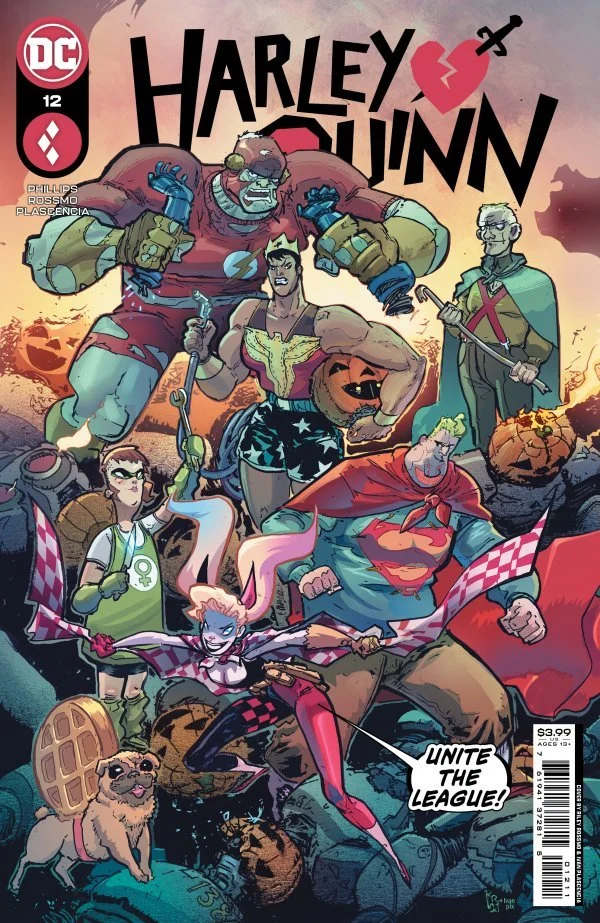Harley Quinn # 11 // Review
Harley Quinn #11 is written by Stephanie Phillips, drawn by Riley Rossmo, colored by Ivan Plascencia, and lettered by Deron Bennett. Harley Quinn #11 is published by DC Comics. This issue begins the Bad Math arc.
Last issue, a lot of things went down. Not only did Dr. Hugo Strange (unsurprisingly) turn on Keepsake and attempt to kill him, but Harley and Ivy have a disastrous date. They go on a double date to the museum with Kevin and his girlfriend Sam, but things quickly fall apart when Ivy reveals she wants to steal a diamond and leave Gotham with Harley. But when Harley tells Ivy that she wants to continue being a hero, the two fight, and Ivy reveals that she’s upset; Harley never asked her what she wanted to do.
Harley Quinn #10 ends with Harley realizing that despite her love for Ivy, their stories are going in two different directions, and Gotham isn’t where Ivy needs to be right now. She loves Ivy, and she needs to let her go because she loves her. At least for the time being.
Harley’s been going through it emotionally, but she’s got people that are there for her. At the start of Harley Quinn #11, she’s attending the support group she started to help the former underlings of Gotham’s various villains. But when Harley learns that Keepsake has kidnapped Kevin and planted a bomb on a train headed for downtown Gotham, she’s got to get right back into the superhero thing.
Phillips gives Harley a multifaceted characterization; she’s chaotic but intelligent, joking around while fighting, but powerful. This is exemplified in the scene where while fighting Keepsake, Harley points out to him that he’s just forced her into a real-life situation of the trolley problem and tells him exactly why the concept of such a problem is flawed.
Harley Quinn #11 features full pages of Rossmo’s art with key areas, such as Harley’s face, separated with vivid white panels, and this was a fantastic choice. It shows the entire scene very fluidly while still making it clear what order the reader should go and allowing (insert artists) to show more minor details that might get lost if the entire page was divided into individual panels.
Plasencia’s colors work perfectly with Rossmo’s art style. Rossmo’s draw Plasencia uses lighter, less saturated colors for drawings of Harley that take place at the start of an action. And for graphics at the end of the action, the colors are more saturated.
Rounding out the art is Bennett’s lettering. And with the layout on the pages of full art, the order of the speech bubbles is important for being able to follow along. Bennett makes the dialogue easy to follow while also keeping it from getting in the way of the action.
While it was sad to see Ivy leave so soon after she came back, it hasn’t taken Harley down and out, and she’s still fighting for Gotham and for her friends. Harley has undergone a lot of growth as a character, and that’s especially visible in the aftermath of Ivy’s leaving. Harley Quinn #11 is a great start to the next arc of Harley’s story.









